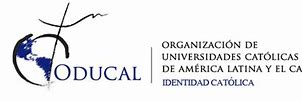Detalles MARC
| 000 -CABECERA |
|---|
| campo de control de longitud fija |
10843cam a22004817i 4500 |
| 001 - NÚMERO DE CONTROL |
|---|
| campo de control |
18094683 |
| 005 - FECHA Y HORA DE ACTUALIZACIÓN |
|---|
| 005 |
20231004100146.0 |
| 008 - LONGITUD FIJA |
|---|
| campo de control de longitud fija |
140331t20132013nyua 001 0 eng d |
| 010 ## - NÚMERO DE CONTROL DE LA BIBLIOTECA DEL CONGRESO |
|---|
| Número de control de LC |
2013454809 |
| 020 ## - INTERNATIONAL STANDARD BOOK NUMBER |
|---|
| ISBN |
9780071799485 |
| 020 ## - INTERNATIONAL STANDARD BOOK NUMBER |
|---|
| ISBN |
0071799486 |
| 035 ## - NÚMERO DE CONTROL DEL SISTEMA |
|---|
| Número de control de sistema |
(OCoLC)ocn793223210 |
| 040 ## - FUENTE DE CATALOGACIÓN |
|---|
| Centro catalogador/agencia de origen |
BTCTA |
| Lengua de catalogación |
Inglés |
| Centro/agencia transcriptor |
EC-QuPUC |
| Normas de descripción |
rda |
| Centro modificador |
DLC |
| Catalogador |
|
| 041 1# - IDIOMA |
|---|
| idioma |
Inglés |
| Código de lengua original |
alemán |
| 042 ## - CÓDIGO DE AUTENTICACIÓN |
|---|
| Código de autenticación |
lccopycat |
| 100 1# - AUTOR PERSONAL |
|---|
| nombre |
Kief, Hans B. |
| 240 10 - TÍTULO UNIFORME |
|---|
| título |
<a href="CNC Handbuch 2011/2012.">CNC Handbuch 2011/2012.</a> |
| Lenguaje de la obra |
English |
| 245 10 - TÍTULO PROPIAMENTE DICHO |
|---|
| título |
CNC handbook / |
| Mención de responsabilidad, etc. |
Hans B. Kief, Helmut A. Roschiwal ; translated by Jefferson B. Hood. |
| 264 #1 - PIE DE IMPRENTA |
|---|
| lugar (ciudad) |
New York : |
| editorial |
McGraw-Hill, |
| fecha |
[2013] |
| 264 #4 - PIE DE IMPRENTA |
|---|
| fecha |
©2013 |
| 300 ## - DESCRIPCIÓN FÍSICA |
|---|
| Extensión |
ix, 466 pages : |
| Ilustraciones |
illustrations (chiefly color) ; |
| Dimensiones |
24 cm |
| 336 ## - TIPO DE CONTENIDO |
|---|
| Término de tipo de contenido |
texto |
| Content type code |
txt |
| 337 ## - MEDIACIÓN |
|---|
| Nombre/término del tipo de medio |
no mediado |
| Media type code |
n |
| 338 ## - PORTADOR |
|---|
| Nombre/término del tipo de soporte |
volumen |
| Carrier type code |
nc |
| 500 ## - NOTA GENERAL |
|---|
| Nota general |
Includes index. |
| 505 0# - NOTA DE CONTENIDO |
|---|
| Nota de contenido |
Preface -- Part 1: Introduction To CNC Technology: -- 1: Historical development of numerical control production: -- 1-1: Germany after World War II -- 1-2: Rebuilding the German machine tool industry -- 1-3: Worldwide changes -- 1-4: Typical new NC machines -- 1-5: Japanese influence -- 1-6: Crisis in Germany -- 1-7: Causes and effects -- 1-8: Flexible manufacturing systems -- 1-9: Situation and outlook -- 1-10: Conclusions -- 2: Milestones in the development of NC -- 3: What are NC and CNC?: -- 3-1: Path to NC -- 3-2: Hardware -- 3-3: Software -- 3-4: Control methods -- 3-5: NC axes -- 3-6: PLCs -- 3-7: Interface section -- 3-8: Computers and NC -- 3-9: NC programs and programming -- 3-10: Data input -- 3-11: Operation -- 3-12: Summary -- Important points to remember -- Part 2: Functions Of Numerical Control Systems: -- 1: Implementation of dimensional data: -- 1-1: Introduction -- 1-2: Axis designations -- 1-3: Closed-loop position control -- 1-4: Position measurement -- 1-5: Feed drives -- 1-6: Summary -- Important points to remember -- 2: Implementation of switching information: -- 2-1: Tool changing -- 2-2: Automatic workpiece changing -- 2-3: Changing the speed -- 2-4: Summary -- Important points to remember -- 3: Functions of numerical control systems: -- 3-1: Definition -- 3-2: Basic functions of CNC -- 3-3: Special functions of CNC -- 3-4: CNC displays -- 3-5: Open-ended control systems -- 3-6: Price considerations -- 3-7: Advantages of the latest developments in CNC -- 3-8: Summary -- Important points to remember -- 4: PLCs: Programmable logic controllers: -- 4-1: Definition -- 4-2: Origins of the PLC -- 4-3: Structure and functions of PLCs -- 4-4: Data buses and field buses -- 4-5: Advantages of PLCs -- 4-6: PLC programming and documentation -- 4-7: Programs -- 4-8: Program memory -- 4-9: PLCs, CNC systems, and PCs in integrated operation -- 4-10: Selection criteria for PLCs -- 4-11: Summary -- Important points to remember -- 5: Effects of CNC on machine components: -- 5-1: Machine configuration -- 5-2: Machine frames -- 5-3: Guides -- 5-4: Main drives -- 5-5: Machine enclosures -- 5-6: Coolant supply -- 5-7: Chip removal -- 5-8: Summary -- Important points to remember -- Part 3: Types Of Numerically Controlled Machines: -- 1: Computer numerical control machine tools: -- 1-1: Machining centers, milling machines -- 1-2: Turning machines -- 1-3: Grinding machines -- 1-4: Gear-cutting machines -- 1-5: Drilling machines -- 1-6: Parallel kinematic machines -- 1-7: Sawing machines -- 1-8: Laser machining systems -- 1-9: Punching and nibbling machines -- 1-10: Tube-bending machines -- 1-11: Electrical-discharge machines -- 1-12: Electron-beam machines -- 1-13: Water-jet cutting machines -- 1-14: Development trends in numerically controlled machine tools -- 1-15: Measuring and testing -- 1-16: Summary -- Important points to remember -- 2: Additive manufacturing processes: -- 2-1: Introduction -- 2-2: Definition -- 2-3: Process chain -- 2-4: Classification of additive manufacturing processes -- 2-5: Introduction to the principal-layer manufacturing processes -- 2-6: Summary -- Important points to remember -- |
| 505 0# - NOTA DE CONTENIDO |
|---|
| Nota de contenido |
3: Flexible manufacturing systems: -- 3-1: Definition -- 3-2: Flexible manufacturing islands -- 3-3: Flexible manufacturing cells -- 3-4: Technical characteristics of flexible manufacturing systems -- 3-5: Application criteria for flexible manufacturing systems -- 3-6: Manufacturing principles -- 3-7: Machine selection and layout -- 3-8: Workpiece-transport systems -- 3-9: CNC systems suitable for flexible manufacturing -- 3-10: Host computers in flexible manufacturing systems -- 3-11: Economic advantages of flexible manufacturing systems -- 3-12: Problems and risks in the design of flexible manufacturing systems -- 3-13: Flexibility and complexity -- 3-14: Simulation of flexible manufacturing systems -- 3-15: Production Planning System (PPS) -- 3-16: Summary -- Important points to remember -- 4: Industrial robots and handling: -- 4-1: Introduction -- 4-2: Definition: what is an industrial robot? -- 4-3: Structure of industrial robots -- 4-4: Mechanical elements/kinematics -- 4-5: Gripper or effector -- 4-6: Controllers -- 4-7: Safe robot technology -- 4-8: Programming -- 4-9: Sensors -- 4-10: Application examples for industrial robots -- 4-11: Application criteria for industrial robots -- 4-12: Comparison of industrial robots and CNC machines -- 4-13: Summary and outlook -- Important points to remember -- Part 4: Tooling Systems For Computer Numerical Control Machines: -- 1: Tooling systems -- 1-1: Introduction -- 1-2: Tool systems -- 1-3: Tool presetting -- 1-4: In-house tool catalogs -- 1-5: Tool identification -- 1-6: Tool management -- 1-7: Tool measurement and monitoring with laser systems -- 1-8: Summary -- Important points to remember -- 2: Close-to-process production measurement technology in combination with mechatronic tool systems: -- 2-1: Introduction -- 2-2: Parallel measurement technologies -- 2-3: Close-to-process measurement in idle times -- 2-4: Close to the process with bore gauges -- 2-5: Actuator-driven tool systems close the control circuit -- 2-6: Mechatronic tool systems -- 2-7: Closed process chain -- 2-8: Outlook -- 2-9: Summary -- Important points to remember -- Part 5: Computer Numerical Control Programs And Programming: -- 1: Computer numerical control programs: -- 1-1: Definition -- 1-2: Structure of NC programs -- 1-3: Program structure, syntax, and semantics -- 1-4: On/off commands (M-functions) -- 1-5: Dimensional data -- 1-6: Preparatory functions (G-functions) -- 1-7: Cycles -- 1-8: Zero points and reference points -- 1-9: Transformation -- 1-10: Tool compensation -- 1-11: Summary -- Important points to remember -- 2: Programming of CNC machines: -- 2-1: Definition of NC programming -- 2-2: Programming methods -- 2-3: NC programmer -- 2-4: Graphics to make work easier -- 2-5: Distributed intelligence -- 2-6: Selecting a suitable programming system -- 2-7: Summary -- Important points to remember -- 3: CNC programming systems: -- 3-1: Introduction -- 3-2: Machining processes are undergoing major changes -- 3-3: Area of application sets the priorities -- 3-4: Input data from various sources -- 3-5: Capabilities of modern NC programming systems (CAM) -- 3-6: Data models with a uniform high standard -- 3-7: CAM-oriented geometry manipulation -- 3-8: Only high-performance machining strategies count -- 3-9: 3D models offer more -- 3-10: Innovation with feature technology -- 3-11: Automatic object detection -- 3-12: Machining database -- 3-13: Tools -- 3-14: Clamping planning and definition of the sequence -- 3-15: Importance of simulation -- 3-16: Postprocessors -- 3-17: Generated data and interfaces with the machine tools -- 3-18: Summary -- Important points to remember -- 4: Manufacturing simulation: -- 4-1: Introduction -- 4-2: Qualitative classification of systems -- 4-3: Components of a simulation scenario -- 4-4: Procedure for NC simulations -- 4-5: Fields of application -- 4-6: Summary -- Important points to remember -- |
| 505 0# - NOTA DE CONTENIDO |
|---|
| Nota de contenido |
Part 6: Integrating Computer Numerical Control Technology Into In-House Information Technology Systems: -- 1: Direct numerical control of distributed numerical control: -- 1-1: Definition -- 1-2: Functions of DNC -- 1-3: Application criteria for DNC systems -- 1-4: Data communication with CNC systems -- 1-5: Methods for requesting programs -- 1-6: DNC systems currently available -- 1-7: Network technology for DNC -- 1-8: Advantages of using networks -- 1-9: NC program management -- 1-10: Advantages of DNC operation -- 1-11: Cost-effectiveness of DNC -- 1-12: Current state and trends -- 1-13: Summary -- Important points to remember -- 2: LANS-local-area-networks: -- 2-1: Introduction -- 2-2: Local-area networks (LANs) -- 2-3: What is information? -- 2-4: Characteristics and features of LANs -- 2-5: Gateways and bridges -- 2-6: Criteria for selecting a suitable LAN -- 2-7: Interfaces -- 2-8: Summary -- Important points to remember -- 3: Digital product development and manufacturing: from CAD and CAM to PLM: -- 3-1: Introduction -- 3-2: Terminology and history -- 3-3: Digital product development -- 3-4: Digital manufacturing -- 3-5: Summary -- Important points to remember -- Glossary -- Index. |
| 520 ## - RESUMEN |
|---|
| Resumen |
Gain a thorough understanding of computer-based numerical control systems, components, and technologies. Featuring hundreds of color images and schematic diagrams, CNC Handbook explains machining fundamentals and shows you how to build and safely operate fully automated, technically sophisticated mechatronic equipment. Learn how to work with position controllers, accomplish rapid and precise machine motions, use CAD and CAM systems, and integrate CNC into IT networks. The latest CNC programming languages, flexible manufacturing systems, and troubleshooting methods are also discussed in this hands-on guide.--Back cover. |
| 546 ## - NOTA DE IDIOMA |
|---|
| nota |
Translated from German. |
| 700 1# - COAUTOR PERSONAL |
|---|
| Nombre de persona |
Roschiwal, Helmut A. |
| 700 1# - COAUTOR PERSONAL |
|---|
| Nombre de persona |
Hood, Jefferson B. |
| Término indicativo de función/relación |
Traductor |
| 856 42 - LOCALIZACIÓN Y ACCESO ELECTRÓNICOS |
|---|
| Especificación de materiales |
Contributor biographical information |
| URL |
<a href="http://www.loc.gov/catdir/enhancements/fy1515/2013454809-b.html">http://www.loc.gov/catdir/enhancements/fy1515/2013454809-b.html</a> |
| 856 42 - LOCALIZACIÓN Y ACCESO ELECTRÓNICOS |
|---|
| Especificación de materiales |
Publisher description |
| URL |
<a href="http://www.loc.gov/catdir/enhancements/fy1515/2013454809-d.html">http://www.loc.gov/catdir/enhancements/fy1515/2013454809-d.html</a> |
| 856 41 - LOCALIZACIÓN Y ACCESO ELECTRÓNICOS |
|---|
| Especificación de materiales |
Table of contents only |
| URL |
<a href="http://www.loc.gov/catdir/enhancements/fy1515/2013454809-t.html">http://www.loc.gov/catdir/enhancements/fy1515/2013454809-t.html</a> |
| 856 41 - LOCALIZACIÓN Y ACCESO ELECTRÓNICOS |
|---|
| URL |
<a href="https://www.accessengineeringlibrary.com/content/book/9780071799485">https://www.accessengineeringlibrary.com/content/book/9780071799485</a> |
| 082 04 - CLASIFICACIÓN DECIMAL DEWEY |
|---|
| Clasificación |
621.9023 |
| edición |
23 |
| 650 #0 - MATERIA GENERAL |
|---|
| Término de materia o nombre geográfico como elemento inicial |
Machine-tools |
| Subdivisión general |
Numerical control. |
| 650 #0 - MATERIA GENERAL |
|---|
| Término de materia o nombre geográfico como elemento inicial |
Machine-tools |
| Subdivisión general |
Numerical control |
| -- |
Programming. |
| 650 #0 - MATERIA GENERAL |
|---|
| Término de materia o nombre geográfico como elemento inicial |
Machine shops |
| Subdivisión general |
Automation. |
| 650 #0 - MATERIA GENERAL |
|---|
| Término de materia o nombre geográfico como elemento inicial |
Computer programming. |
| 942 ## - PUNTO DE ACCESO ADICIONAL KOHA |
|---|
| Tipo de ítem koha |
E-Book |








